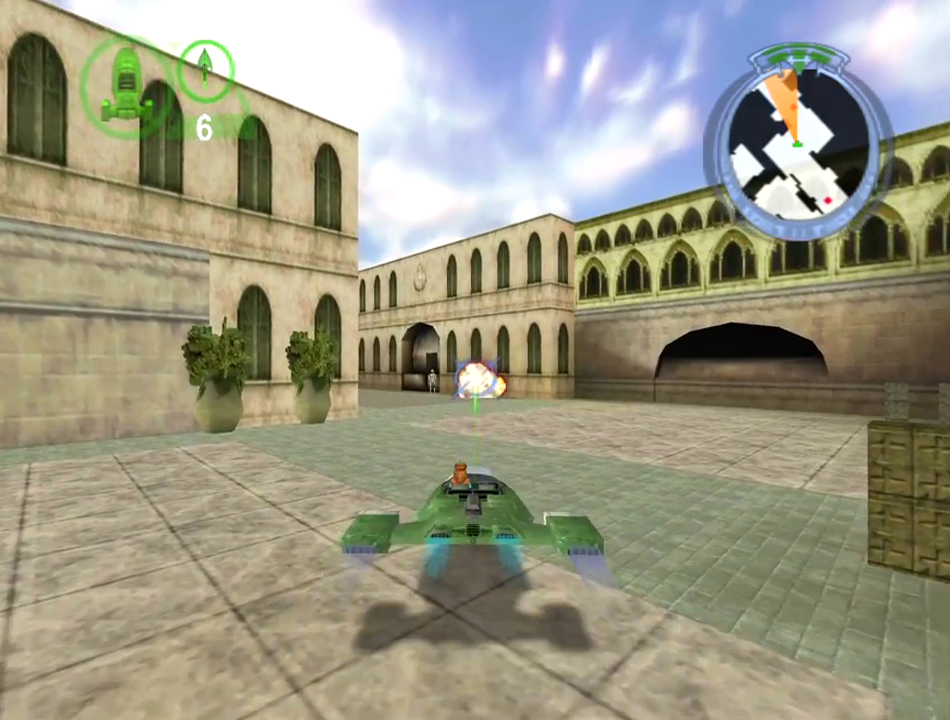

Unlockable content īattle for Naboo includes a number of unlockable secrets. Acquiring medals promotes the player's rank and helps unlock hidden content. Unlike other medal benchmarks, platinum medal benchmarks are undisclosed to the player. If a player's performance exceeds one of the level's four benchmarks in all five categories, a medal-bronze, silver, gold or platinum-is awarded on completion.
-1.jpg)
Each benchmark contains six categories: completion time, number of enemies destroyed, shot accuracy, number of friendly craft and structures saved, number of bonuses collected and lives remaining. The player's performance is measured throughout the game, and performance statistics are checked after each level against four medal benchmarks. These bonuses improve a craft's weapons or durability and are applied to each eligible craft for the remainder of the game. Seven bonus power-ups are hidden in different levels throughout the game. Some levels offer the player the option to change craft mid-level. The game initially restricts the player to a particular craft for each level however, after a level is completed, it can be replayed with any available craft that falls within its air, land or watercraft specification. Each vehicle offers a unique armament arrangement, as well as varying degrees of speed and maneuverability. Aircraft are the Naboo Starfighter, the Naboo Bomber and Police Cruiser, while land and watercraft are the Flash and Gian speeders, the Trade Federation Gunboat and the Heavy STAP. Depending on the level, the player can control several different air, land and water vehicles. The heads-up display features a health meter, a radar and an ammunition count for secondary weapons. Ground defenses are more varied and include battle and destroyer droids, laser and missile turrets, Armored Assault Tanks (AATs), Multi-troop transports (MTTs), gunboats and Single trooper aerial platform (STAPs). Enemy aircraft are primarily composed of Trade Federation Droid starfighters and air mines. Each of the game's 15 levels introduces mission objectives that must be completed to progress to the next level.
#N64 battle for naboo rom Pc
The game's PC port was less well-received, with critics citing poor visuals and difficult controls.Ī follow-up to Star Wars: Rogue Squadron, Battle for Naboo is a fast-paced, arcade-style action game. The Nintendo 64 version received generally positive reviews critics praised the game's tight and responsive controls, but expressed dislike for the game's Episode I setting.
#N64 battle for naboo rom windows
A Windows port was released three months later in March 2001. The game concludes after the player completes a mission that recreates the film's climactic assault on the Trade Federation's Droid Control Ship.īattle for Naboo was published by LucasArts and THQ and released for the Nintendo 64 in December 2000.

As the game progresses, Sykes and the Royal Security Forces fight the Trade Federation in 15 missions that take place on Naboo or in the space immediately surrounding it. Players control Gavyn Sykes, a Lieutenant in Naboo's Royal Security Forces. Set in the fictional Star Wars galaxy, the game takes place entirely during the events depicted in the film Star Wars Episode I: The Phantom Menace. Despite the similarities between the two games, the development team designed a completely new game engine for Battle for Naboo and included land and water-based combat in addition to aerial combat. It is a spiritual sequel to the successful Star Wars: Rogue Squadron released two years earlier. Star Wars: Episode I: Battle for Naboo (known as Star Wars: Battle for Naboo on the PC) is an arcade-style action game co-developed by Factor 5 and LucasArts LucasArts supplied most of the art and level-design, while Factor 5 provided the programming, tools, sound, and most of the cut-scene and art post-production work.


 0 kommentar(er)
0 kommentar(er)
